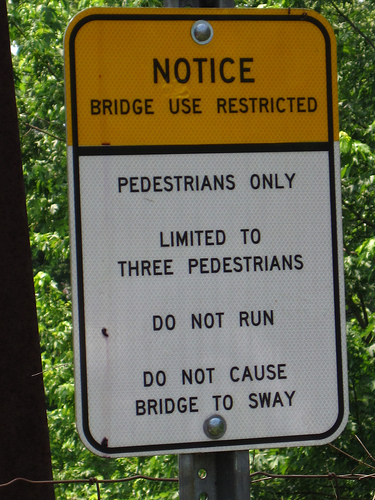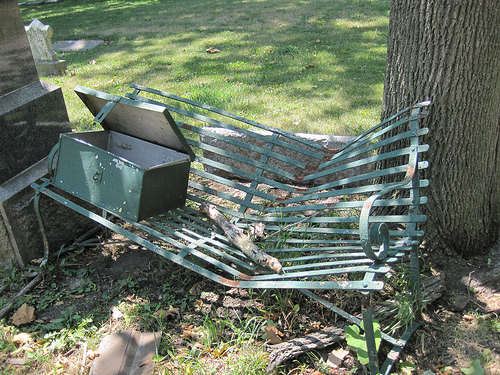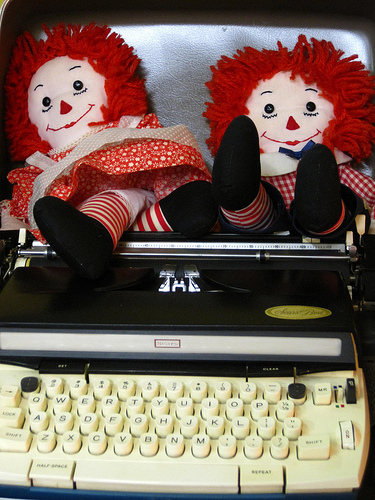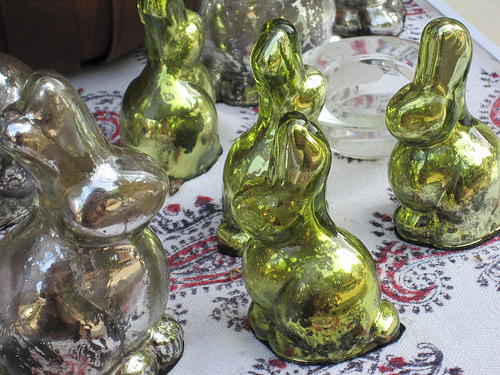
bridge use restricted
We reach the bridge on the third day, in the late afternoon with the sun just starting to sag into the trees. We are tired and hungry, having eaten the last of the almost-stale scones with honey hours before, and overjoyed to have finally reached our next landmark.
We whoop and shout enough to scare the nearby birds but we fall silent when we notice the sign.
No one warned us of this part, though few had set down this path before and returned to share the particulars. We did not expect the bridge, this fabled bridge we had heard about that seemed solid and eternal in our imaginations, to be so narrow and flimsy and have formally posted restrictions.
“Do Not Run” seems understandable given the rickety construction, but “Limited To Three Pedestrians” gives us pause, leaving us shuffling our formerly eager feet in the dirt with four pairs of eyes refusing to make contact.
We decide, after some debate, that it is likely not an enforceable restriction and we should all cross, but one at a time so that there are never more than three of us at once.
No one wants to be last, just in case, so we break a stick and draw straws and I am only slightly surprised to find the short one in my hand when I open my eyes.
My companions cross slowly, it seems an eternity before the third begins to walk, and when she is almost halfway with the other two safely on the far side and watching nervously, I shift my pack on my shoulders and prepare to step forward.
Before I even lift my foot the bridge has vanished, leaving me standing alone next to another sign that instructs me to continue west to the other bridge, and beneath the sign is a warm honeyed scone.
About flax-golden tales. Photo by Carey Farrell. Text by Erin Morgenstern.





